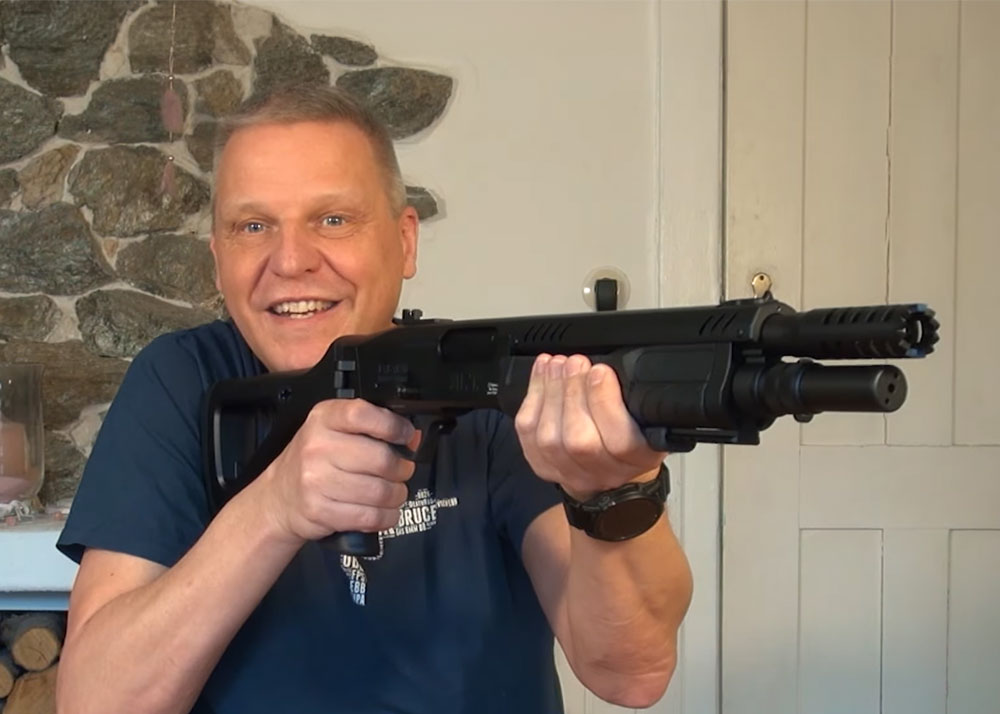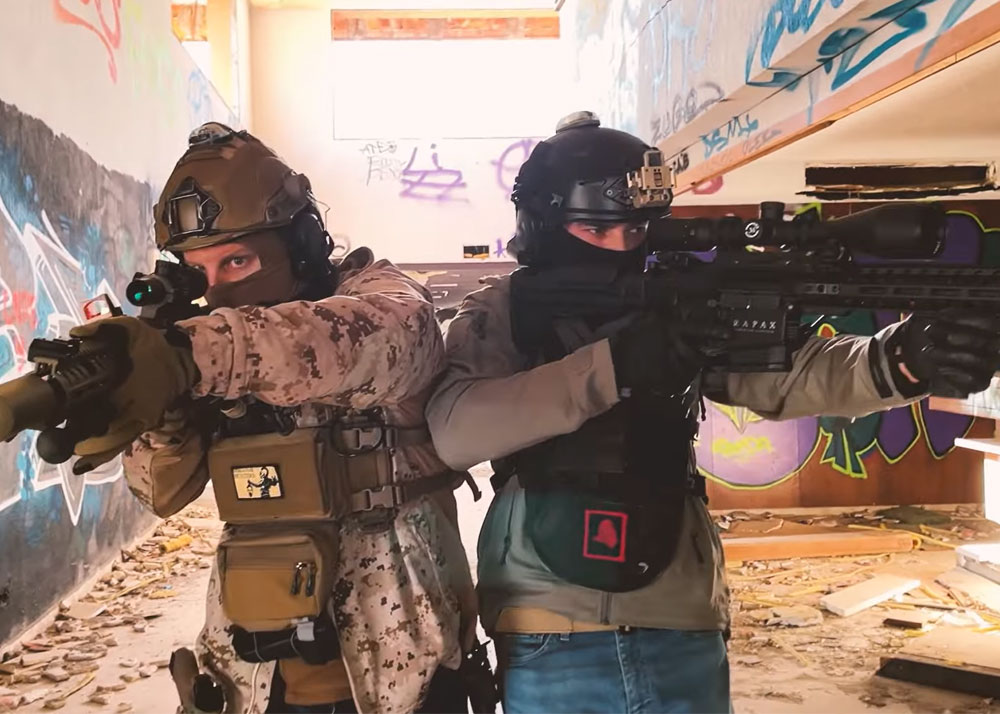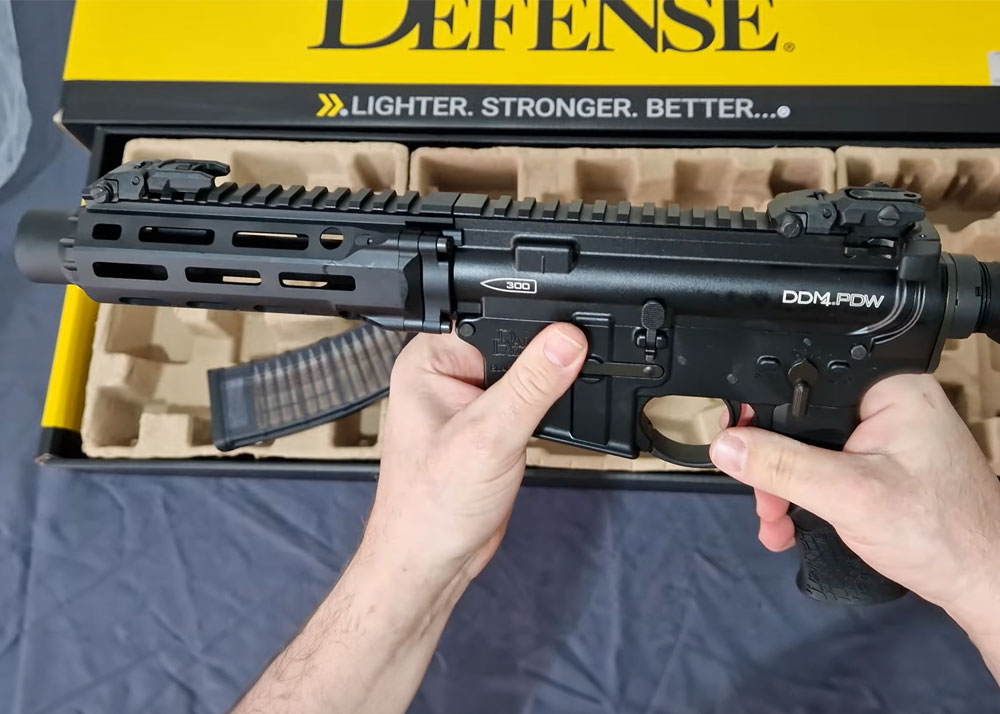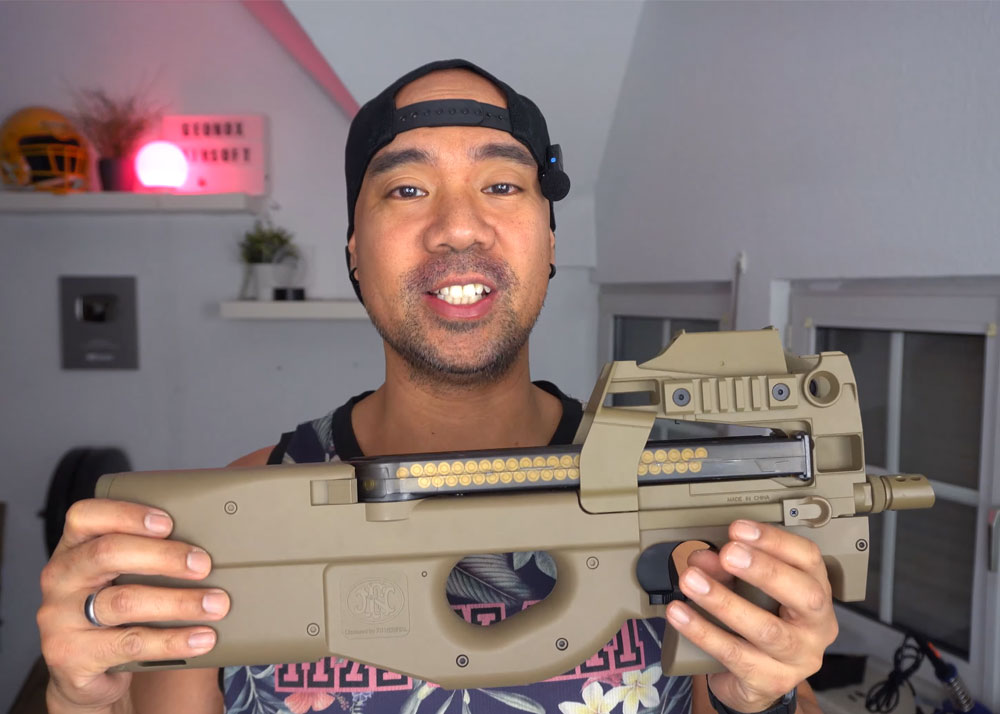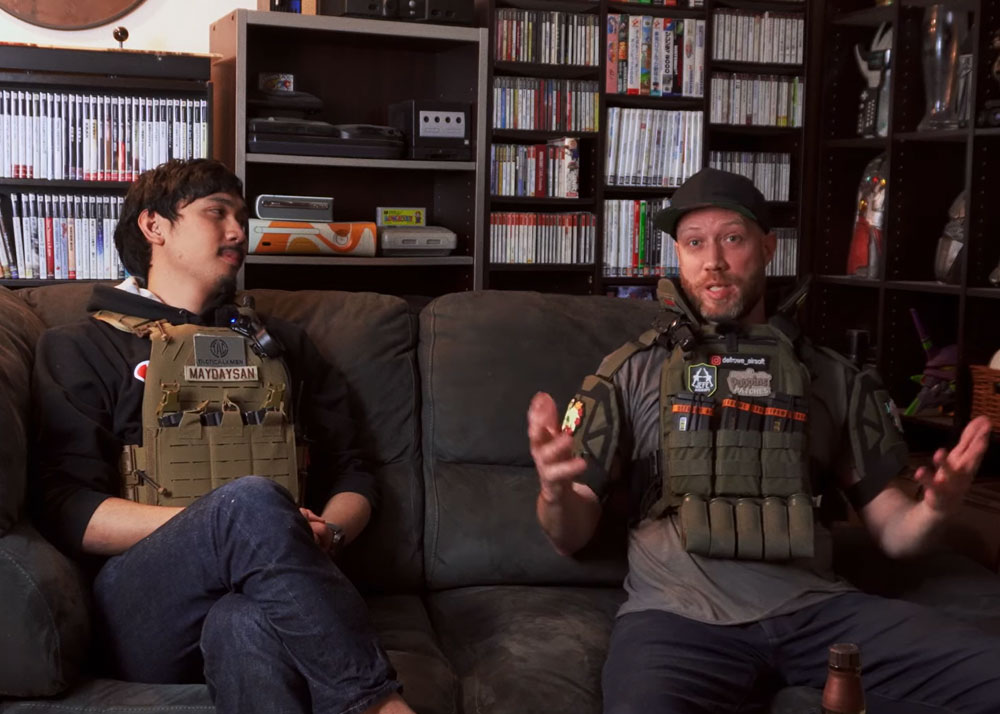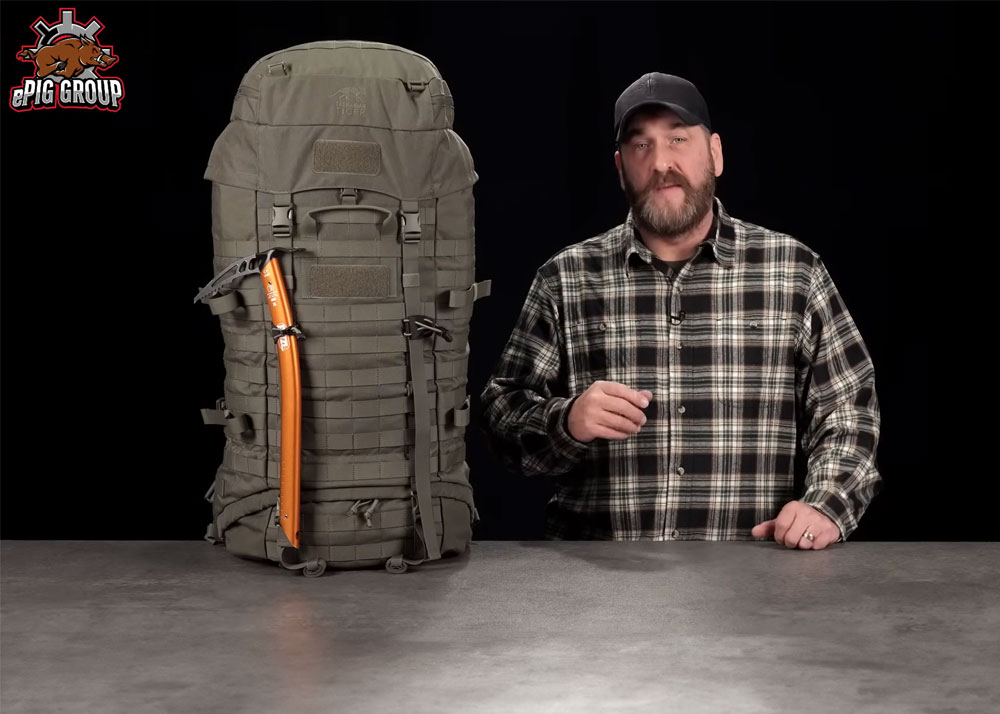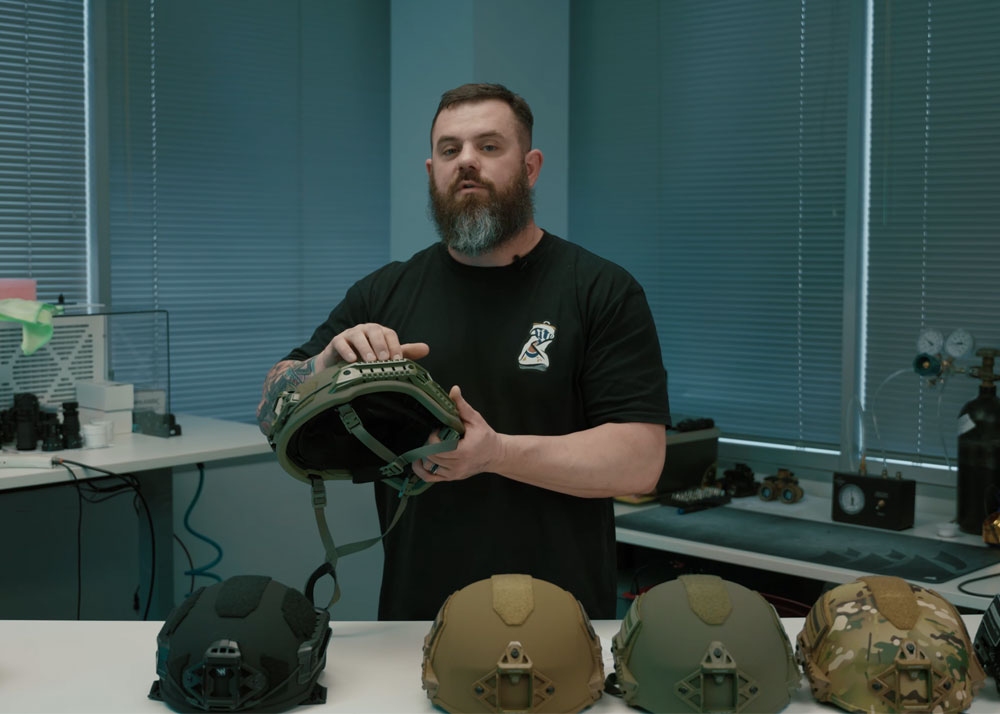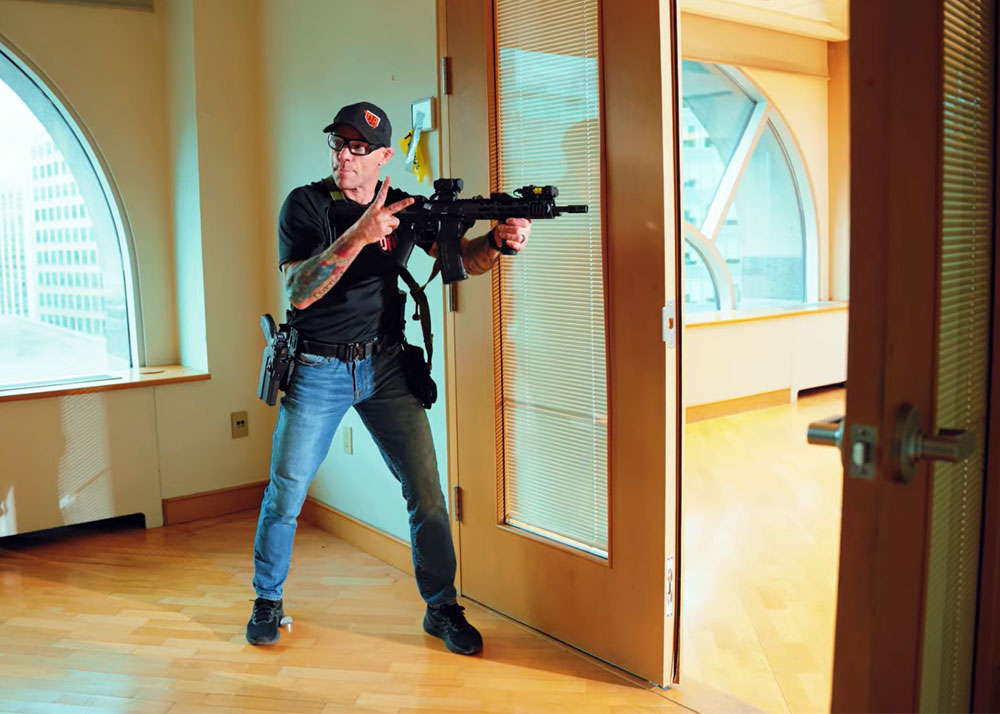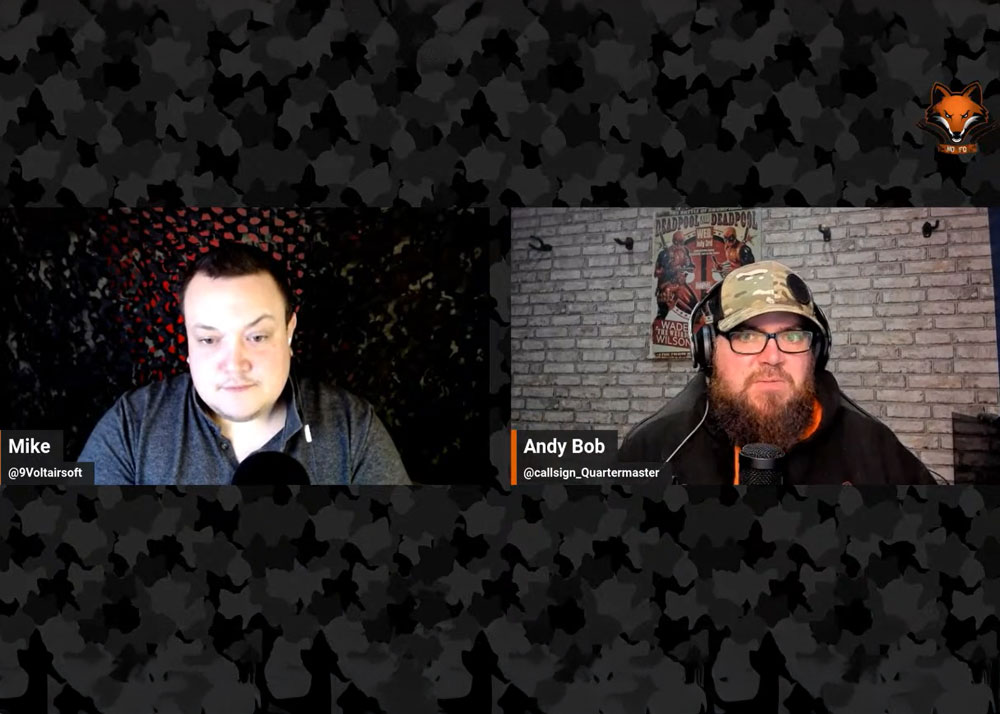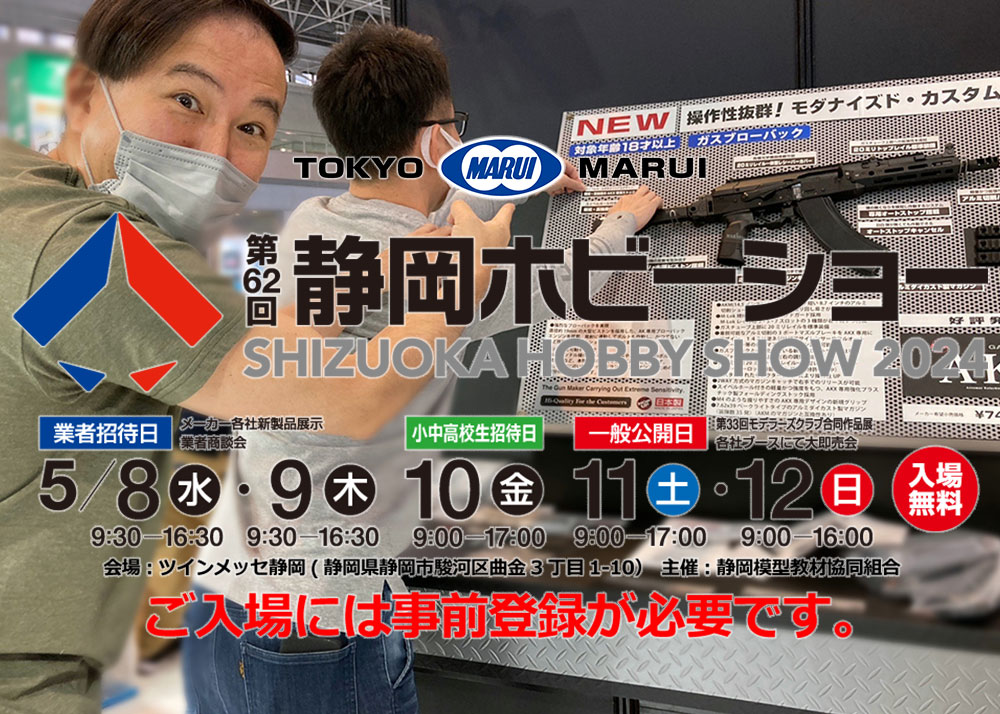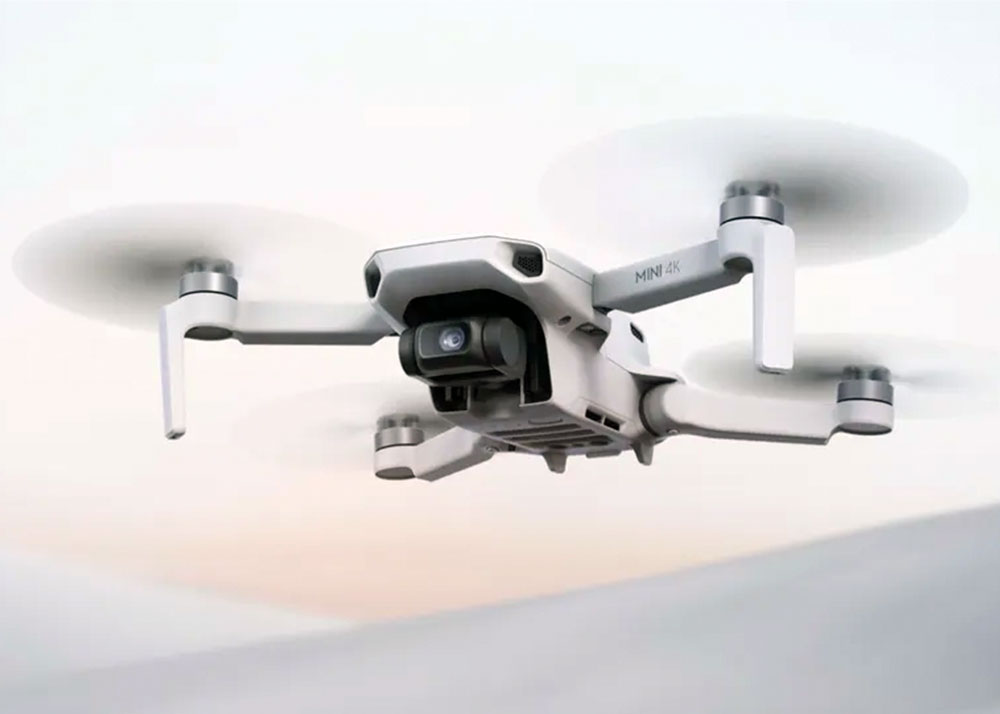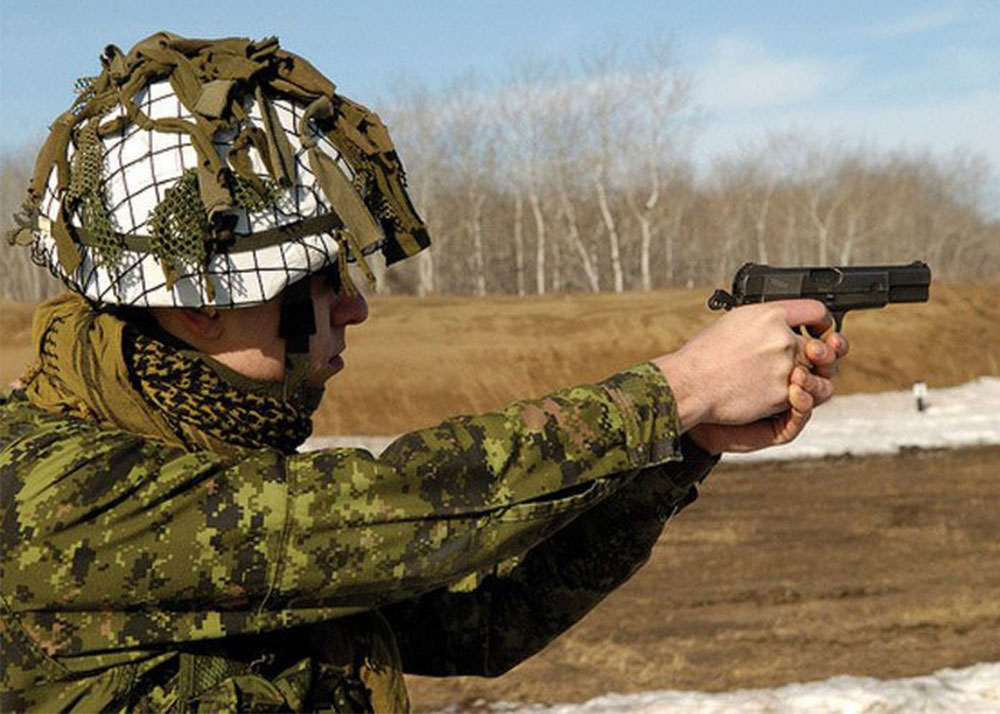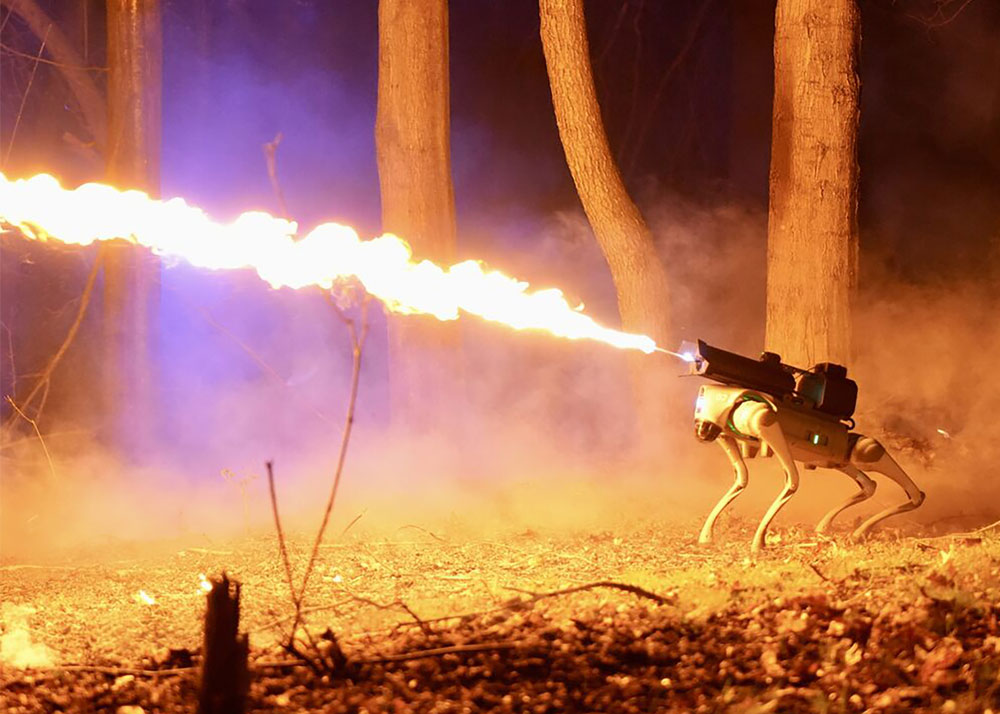50 Years Of Tokyo Marui Part 2: Model Cars & Model Cap Firing Guns
OptimusPrime
17 Nov 2015
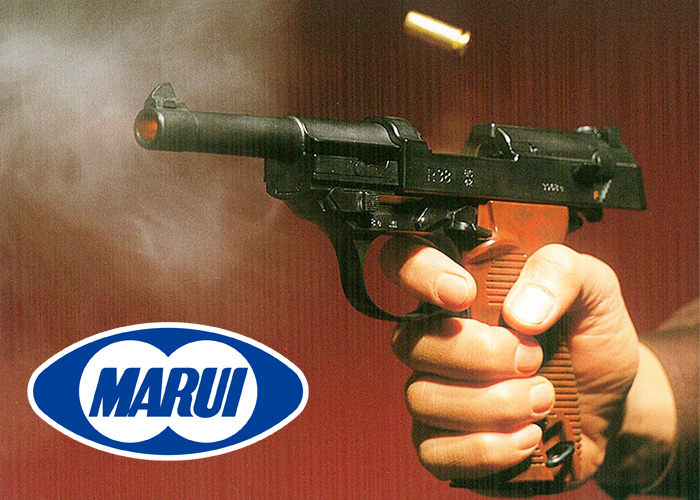
Five years since the release of the MAT Arrow 1, the supercar boom took place with Tokyo Marui releasing model car kits, such as the 1/24 Porsche Carrera RSR Turbo that is used by the Le Mans 1974 Team Martini and the BMW 3.0 CSL that won the Grand Prize in model car design for that year.
Other model car kits they produced were the Nissan Fairlady 260ZG Racing, Ferrari 312T, Mclaren M23, and many more. They are motor-powered even if these are "plamodels". Many children got carried away with setting up "plamodels". Nowadays, these are collector items with those unopened kits fetching good prices online.
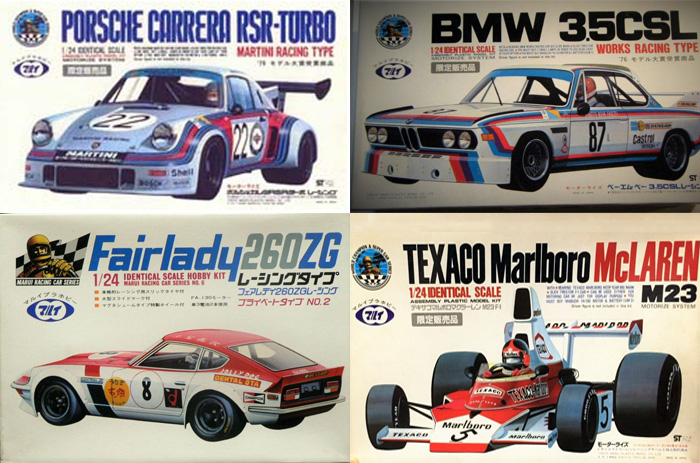
Mr. Shimamura gets a flashback on how they sold their toy car models:
We were not only just making and selling, we also had different packaging ideas. For example, most of the box of plastic toy cars that cost JPY500 were of the same size at that time; but only the boxes of Marui toy cars were twice bigger. We thought that this will make kids feel happy. For the same price of JPY500, the kids would be more than happy to choose the bigger one. If the car was of the same size but used big box, the cost will be high. However, Marui chose the big box. Because we saw things through children’s eyes and with that, we grabbed the children’s hearts.
I have vaguely understood Marui’s company culture and their mind from a child. My friend likes other companies, but I like Marui. Because Marui is different from others and have originality.
Another thing apart from the bigger box, Marui made "plamodels" that included paint and "plamodels" with selectable wheels. With paint included, the cost will be high. Other companies saved on costs and earned money. Marui thought that even though the cost is high, they still wanted kids to be happy with such options. They have a passion not only about product making but also about selling products that provide more value.
When other companies made "plamodels" powered by one dry cell, Marui’s toys needed 2 or 4 dry cells. When our racing toy car crashed into the wall, it suddenly switched off and stopped the motor, but I also remember other companies' products, broken parts fly off at the impact of crashing into the wall before switching off.
In 1978, a second factory was established in Chiba prefecture. In this year, something shook the hobby industry --- the arcade game “Space Invaders” sold by Taito. Many people, especially university students to adults were fascinated by it and the atmosphere in the gaming world shifted to playing games individually. Later, the appearance of the Nintendo Family Computer definitely changed how games are played personally. The playing field has been changed and dramatically shifted to the TV screen with the appearance of video games. The "plamodels" were played by kids passionately, but with the change, these were then treated more as collector's items.
Tokyo Marui tried many ways to stay relevant, even to lower the price of the toys, as it is important for their policy that “toys must move and toys must be played.” At that time, the situation of the "plamodel" changed to being collectors' items; if they keep making on making "plamodels", their production would be in conflict with their policy. Feeling the pinch of such change in gaming, they started researching for “the hobby that can be played more passionately more than plamodel.” With that in mind, they found model guns.
In 1979, they released their first model gun, the 44 Automag. This is a plastic model gun that can be assembled and played. After following the assembly instructions, it can be played with gunpowder. Before they were finished with the series, they encountered many difficulties.
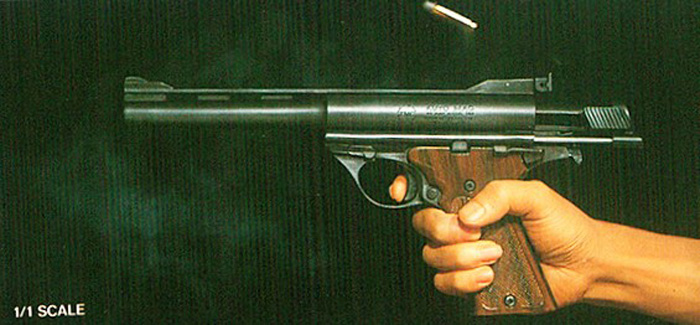
(Photo: Tokyo Marui .44 Automag Model Cap Gun)
In one story, they first tried a blowback P38 model, producing a prototype that they spent a great cost on only to break into pieces after only one shot. The blowback gives the model gun's body a massive shock effect, even if the prototype's blowback intensity was low for a plastic model gun.
A "plamodel" blowback gun is impossible, somebody said. But Marui persisted and with continued with the trial and error process, the company finally achieved success in producing a “model cap gun” with the blowback function.
Before they released their first model gun, the finished fully assembled model guns from other companies were priced over JPY10,000. However, the Marui "plamodel" can be bought for JPY2,000 to JPY3,000. At such a reasonable price, fun to assemble as a "plamodel" and with enjoyable blowback motion, the series became big hit.
The production of the Colt Python Hunter .357 model cap gun which was a long revolver with an attached scope was influenced by an on-air action movie. It proved to be a hit that even after the movie finished its run, Tokyo Marui received customer requests to still sell them. More model cap guns were released after the Python Hunter .357.
But their big impact on the toy gun industry does not happen until 6 years later.
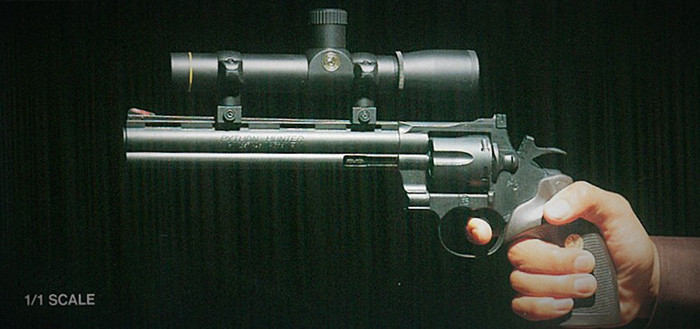
(Photo: Tokyo Marui Colt Python Hunter .357 Model Cap Gun)
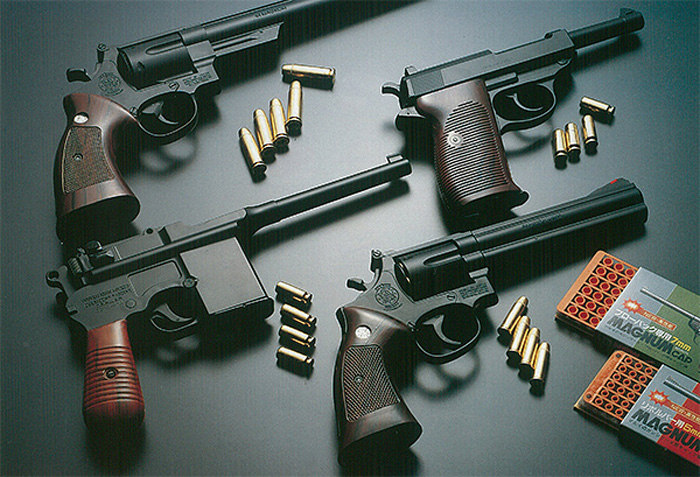
(Photo: Tokyo Marui Model Cap Guns)
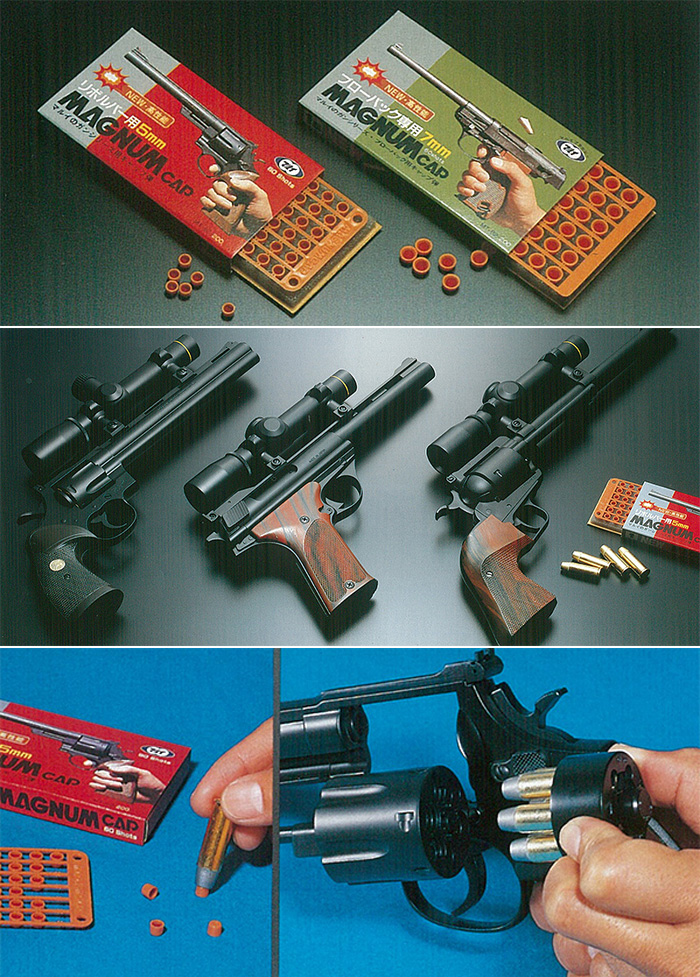
(Photos: Tokyo Marui Magnum Model Cap Guns)
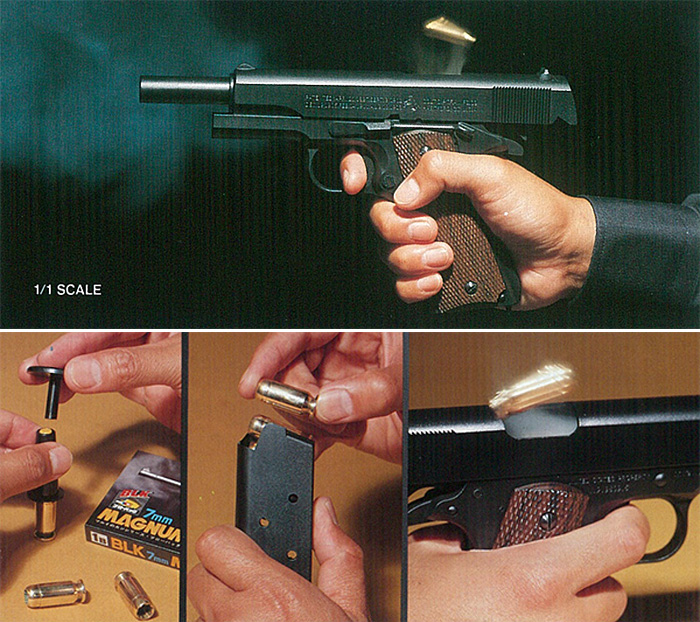
(Photos: Tokyo Marui Colt Government M1911A1 Model Cap Gun)
The company still built 1/24 toy model cars that were big hits, especially the 1/24 Lamborghini Countach was considered to be a masterpiece even now. The highly detailed reproduction of the cockpit, the gimmick of steering the front tire that coordinates handling, realistic detail of headlight and tail lamp blinking, dashboard instruments, with the unique way of opening the door and then closing it seamlessly to the car body, only Marui was able to do these when compared to competitors.
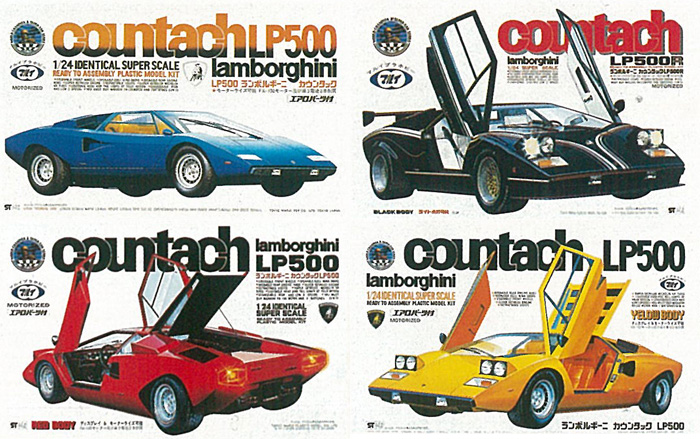
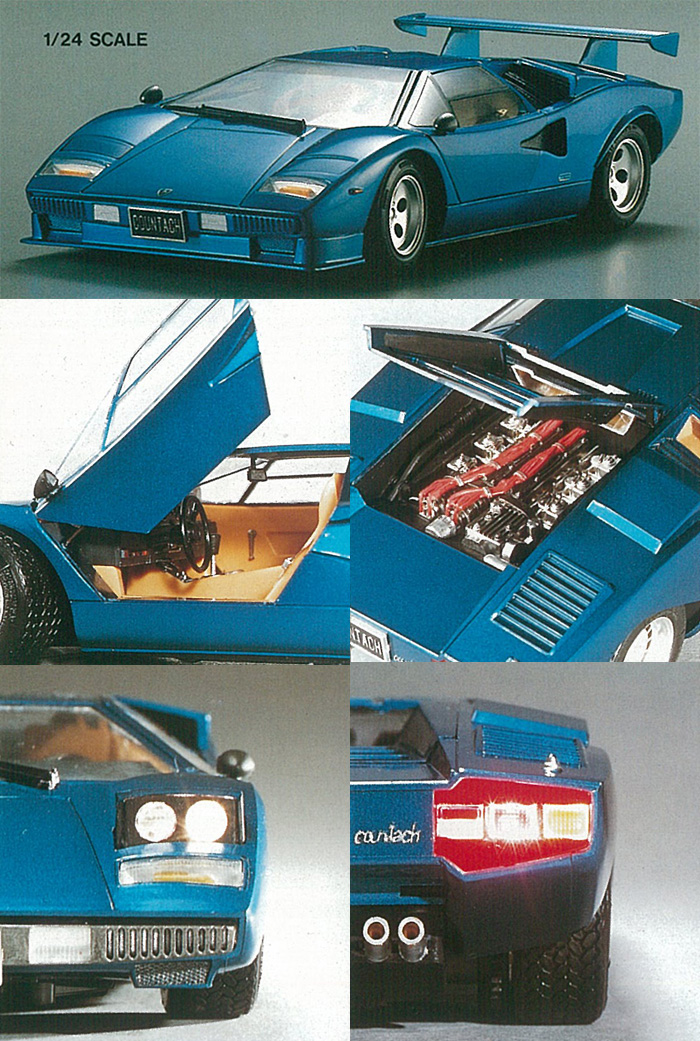
This was the peak of Marui "plamodel" car, afterwards that they have not produced another series of "plamodel" cars.
As they entered RC's golden era which started in 1983 up to 1988, they released their first 1/12 radio controlled monster truck model, the Big Bear Datsun. The Big Bear set the big wheels craze that other manufacturers followed.
Marui and Tamiya were often compared against each other with the Marui Super Wheelies, such as the CJ-7 Golden Eagle and Toyota Land Cruiser being customer favorites. Tokyo Marui's RC models were lower priced but were praised for the high details in their bodies and chassis versatility.
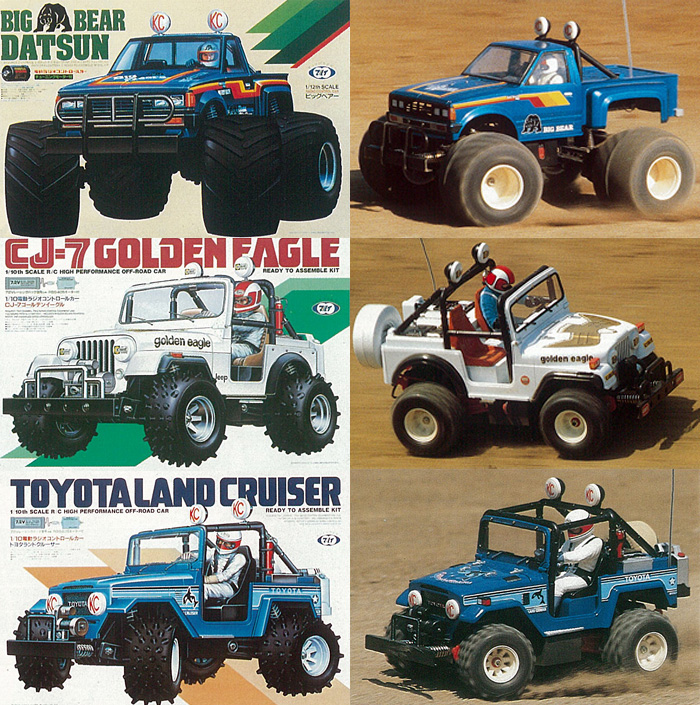
(Photos: Tokyo Marui 1/12 RC Super Wheelies)
They were in the 2WD (Hunter and Galaxy Series) and 4WD (Samurai, Ninja and Shogun) Buggy RC models too, with the Samurai model very much well received and that "many fans will consider it as one of the most beautiful models of its time, both technically and aesthetically" (RC for Old Nuts).
The lightweight frame made of all ABS resin was equipped with a Marui first “Center Differential.” The sealed slide switch, stripped-down polycarbonate body, red and silver color contrast finishing were brilliant. Mr. Shimamura loved at first sight the Samurai ad (which showed the buggy drifting) and very soon approved it.

(Photos: Tokyo Marui 2WD and 4WD RC Buggy Series)
This RC 4WD model product reached a milestone; it was produced before Tokyo Marui started putting more attention to airsoft. Since then, they didn’t release new RC products too. The series is probably the final RC product line from Marui.
Depending on countries, Marui had a considerable impact over the RC in the 80’s, but most of all, into fans’ hearts. Specifically, this was very significant in France where period magazines are testimonies of Marui’s crucial role on the market. Thanks to retromodelisme.com website, one can rapidly realize how much period journalists were enthusiasts about Marui’s models, but also that they all seemed unaware about the models fragility.
Black Hole Sun for RC For Old Nuts. "The Story of Marui"
In the years 1981 to 1985, the company opened a second distribution centre and factory in Yashio, this was followed by the opening of another factory in Iwai City in Ibaraki Prefecture which later on was moved on to Bando. By 1985, the company formally decided to call itself as "Tokyo Marui", dropping the "Toys" from the official name.
- Read: 50 Years Of Tokyo Marui Part 1: The First Ten Years.
- Read: 50 Years Of Tokyo Marui Part 3: The Company Bets On Airsoft
- Read: 50 Years Of Tokyo Marui Part 4: 1991 - The AEG Revolution Starts
- Read: 50 Years Of Tokyo Marui Part 5: Entering The 21st Century
- Read: 50 Years Of Tokyo Marui Part 6: 20 Years Of The AEG & Going Strong

